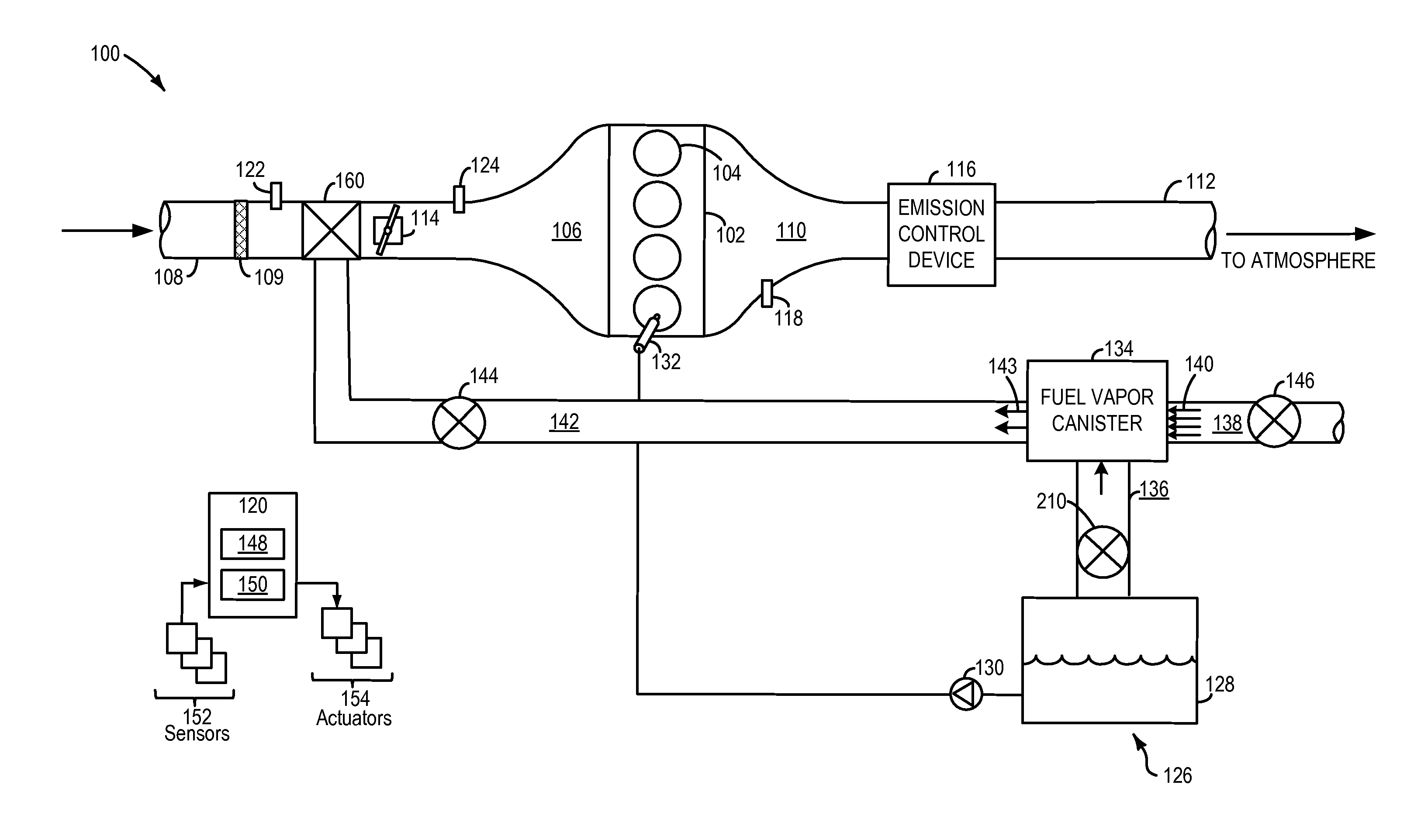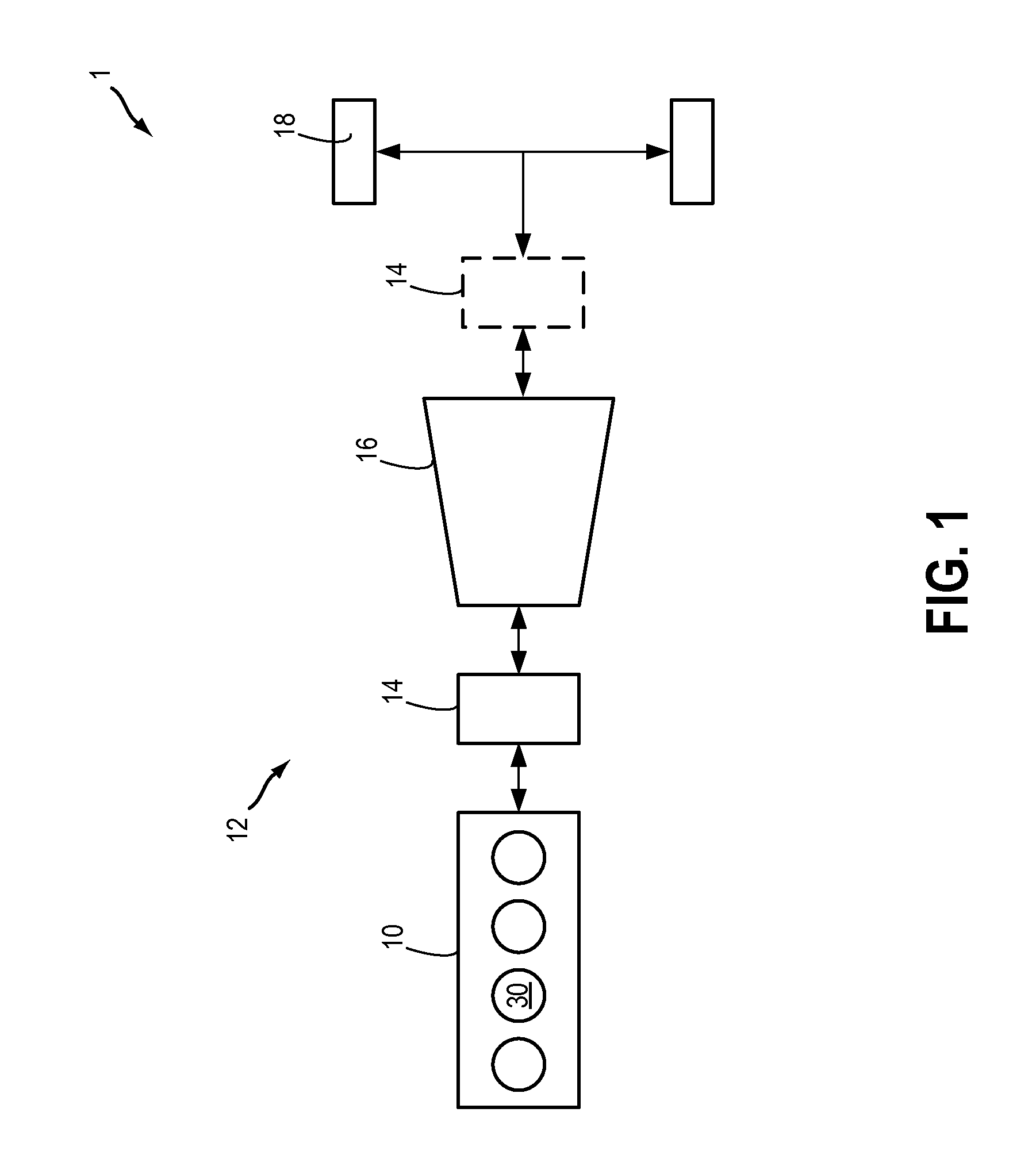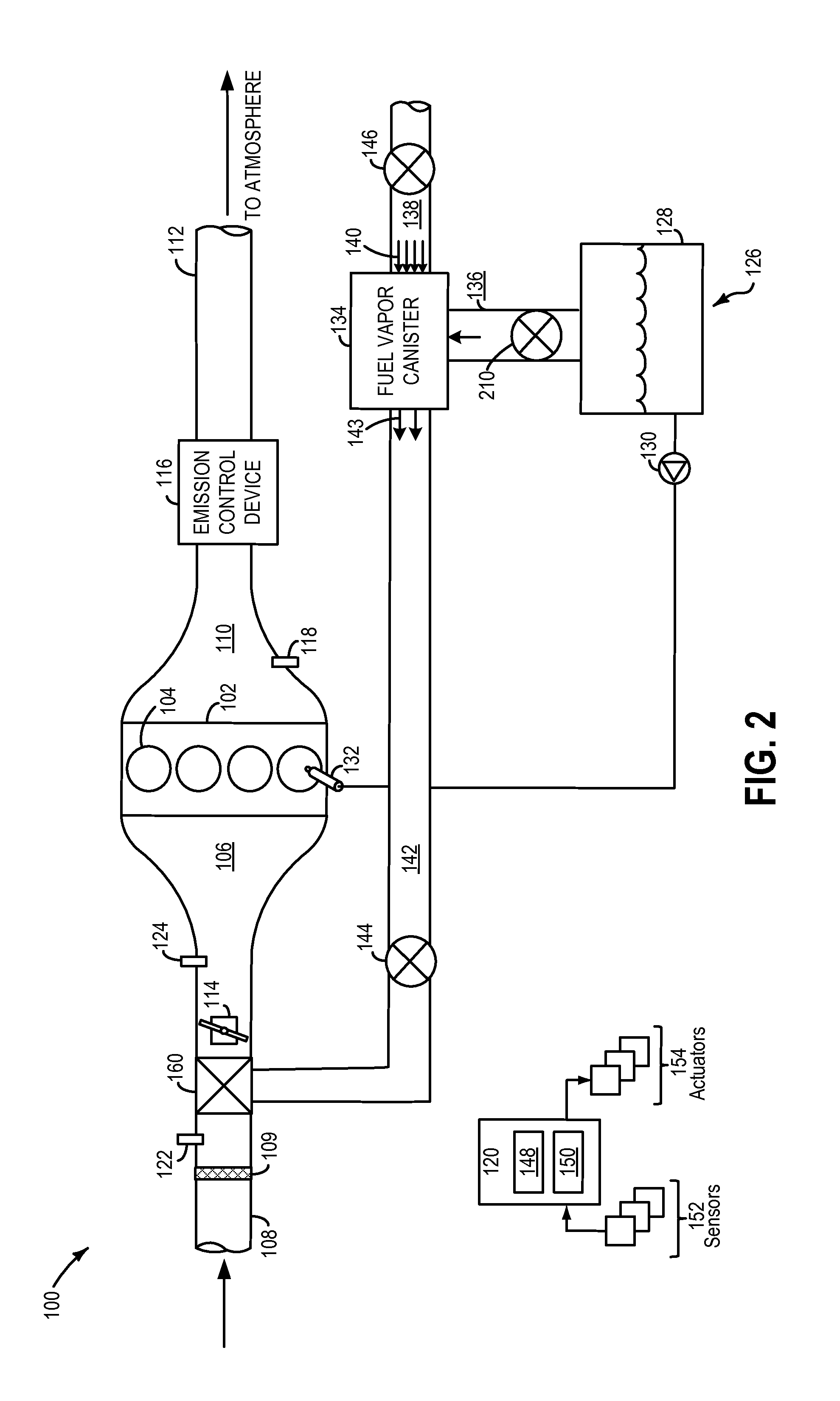Evaporative emission control
- Summary
- Abstract
- Description
- Claims
- Application Information
AI Technical Summary
Benefits of technology
Problems solved by technology
Method used
Image
Examples
embodiment 400
[0046]Now turning to FIG. 4, an alternate embodiment 400 is shown for a fuel vapor canister. In the depicted embodiment, the external housing of the canister on the second side 328 is modified to reduce the number of connections. In particular, each of second air vent 314 and third air vent 318 is configured to receive air via a common intake vent 402. Further, within the canister, second air vent 314 and third air vent 318 are separated from each other by vent dividing wall 434. In addition, the canister may include an air gap 404 for lowering restriction within the canister during purge. The substantially lower restriction allows engine air induction to be mimicked, improving canister purging efficiency during low vacuum availability. In some embodiments, the different chambers or regions of the canister may be divided with an air gap relevant to the purge port to further reduce purge flow restrictions.
embodiment 500
[0047]FIG. 5 shows a further embodiment 500 for the fuel vapor canister. In the depicted embodiment, the external housing of the canister on side 332 is adjusted to reduce the number of connections. In particular, a purge tube 502 having an external passageway (or external routing) is coupled between the purge ports to reduce the number of connections for purging by one. As such, this eliminates the direct connection between first purge port 306 and purge line 142 via first purge branch 342 (See FIG. 3). Instead, fuel vapors released along first purge port 306 may be directed along purge tube 502 towards second purge port 304, from where there may be directed to purge line 142 together. In this way, by using an external passageway, the number of connections coupling the canister to the purge line are reduced, making purge control easier while also reducing losses incurred due to leakage. By using a purge port that runs perpendicular to the air vents, canister restriction during purg...
PUM
 Login to View More
Login to View More Abstract
Description
Claims
Application Information
 Login to View More
Login to View More - R&D
- Intellectual Property
- Life Sciences
- Materials
- Tech Scout
- Unparalleled Data Quality
- Higher Quality Content
- 60% Fewer Hallucinations
Browse by: Latest US Patents, China's latest patents, Technical Efficacy Thesaurus, Application Domain, Technology Topic, Popular Technical Reports.
© 2025 PatSnap. All rights reserved.Legal|Privacy policy|Modern Slavery Act Transparency Statement|Sitemap|About US| Contact US: help@patsnap.com



